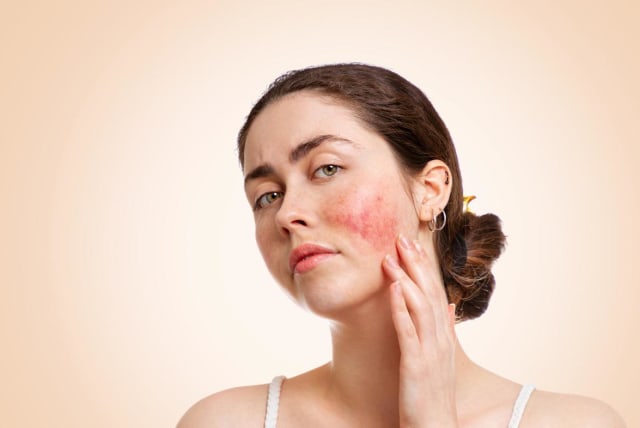Rosacea: What is it and how can you avoid it?

Rosacea primarily affecting the face, will impact up to 10% of the population, particularly women aged 30 and older with fair skin. Learn about its triggers, and natural treatment approaches.
Rosacea, a persistent skin ailment predominantly targeting the face, showcases symptoms like facial redness, swelling, superficial dilated blood vessels, and small pimples. Commonly found on the nose, cheeks, forehead, and chin, it can even lead to a visibly enlarged and reddened nose in severe cases.
Prevalent among 1% to 10% of the population, this condition tends to affect women aged 30 to 50, especially those with fair complexions.
The disease's progression often involves facial skin developing a red rash, burning sensation, dilated blood capillaries (called cuprosis), and occasionally small pimple-like formations.
Unlike acne, rosacea lacks the presence of comedones (blackheads and whiteheads) and is confined to the face, excluding the chest and back regions. Initial stages exhibit sporadic blushing that fades, but eventually, the redness becomes persistent, posing an aesthetic concern. Frequently misdiagnosed as blushing, sunburn, seborrhea, or acne, incorrect treatments only exacerbate the problem. Thus, consulting a dermatologist for an accurate diagnosis is crucial.
Triggered by Culprits: Spicy Food, Alcohol, and Heat
Although the precise origins of rosacea remain unclear, genetic predisposition coupled with environmental factors is believed to cause blood vessels to dilate. Certain factors can exacerbate the condition or trigger outbreaks among susceptible individuals, including excessive sun exposure, intense physical exertion, hot beverages and spicy foods, alcohol intake, hot showers, Jacuzzi use, specific cosmetic products, high temperatures, mental stress, and more. Over time, without proper management, the condition can worsen.
While a cure remains elusive, various medications temporarily relieve severe cases. Treatment approaches differ based on severity and subtype, with dermatologists often refraining from treating mild patients, instead advising makeup application to conceal the affected area.
Nonetheless, proactive measures can minimize facial redness. Regularly applying high-quality products suited to your skin type, accompanied by ample moisturization and sun protection, can be effective.
Specially formulated products for sensitive skin soothe and reduce redness, contributing to a harmonious and healthy complexion. Gentle facial cleansing without exerting pressure is crucial to prevent irritation and redness. Opting for mild, non-irritating cleansers and ingredients that soothe and constrict blood vessels can significantly alleviate facial redness.
Jerusalem Post Store
`; document.getElementById("linkPremium").innerHTML = cont; var divWithLink = document.getElementById("premium-link"); if (divWithLink !== null && divWithLink !== 'undefined') { divWithLink.style.border = "solid 1px #cb0f3e"; divWithLink.style.textAlign = "center"; divWithLink.style.marginBottom = "15px"; divWithLink.style.marginTop = "15px"; divWithLink.style.width = "100%"; divWithLink.style.backgroundColor = "#122952"; divWithLink.style.color = "#ffffff"; divWithLink.style.lineHeight = "1.5"; } } (function (v, i) { });
